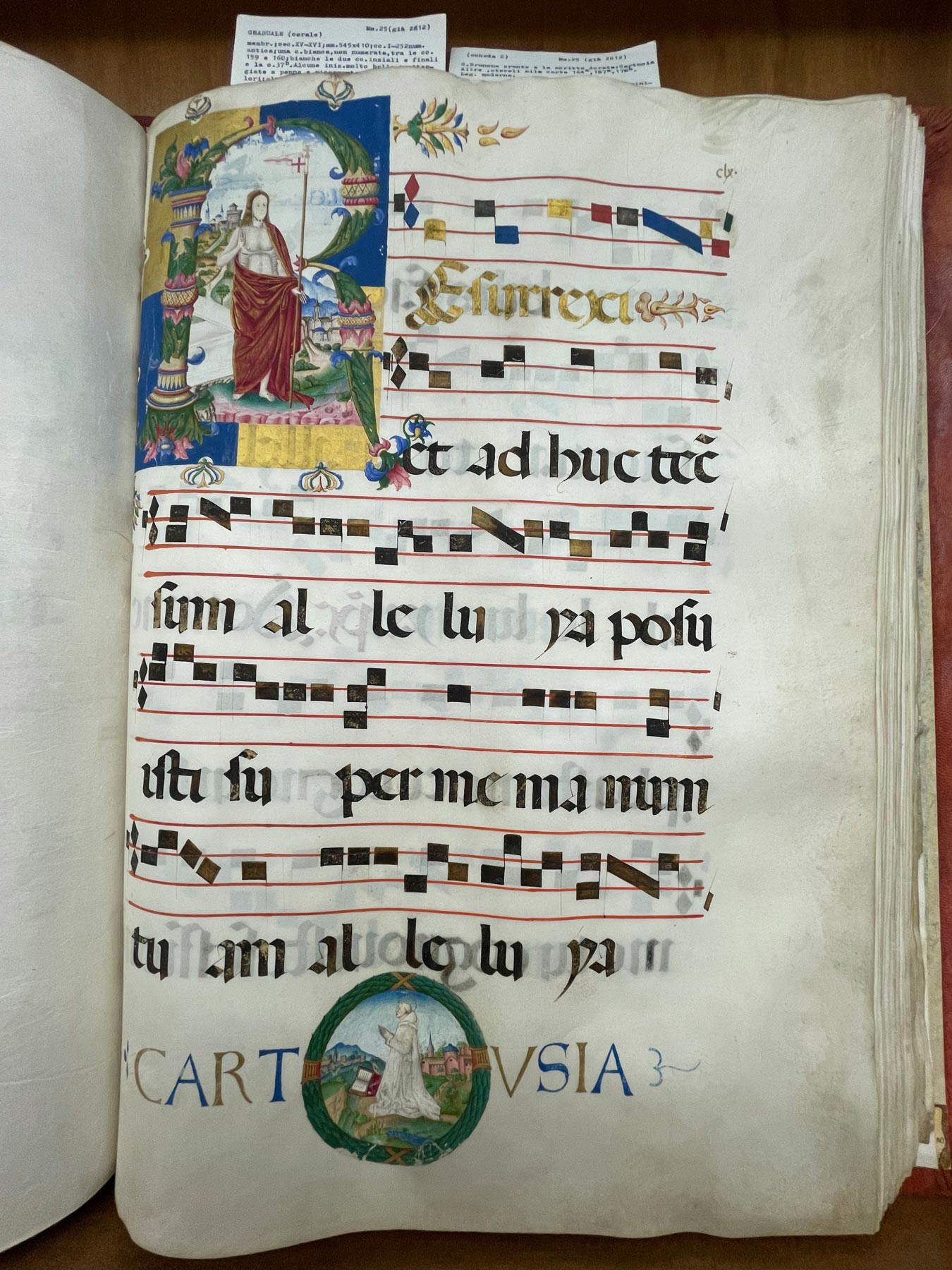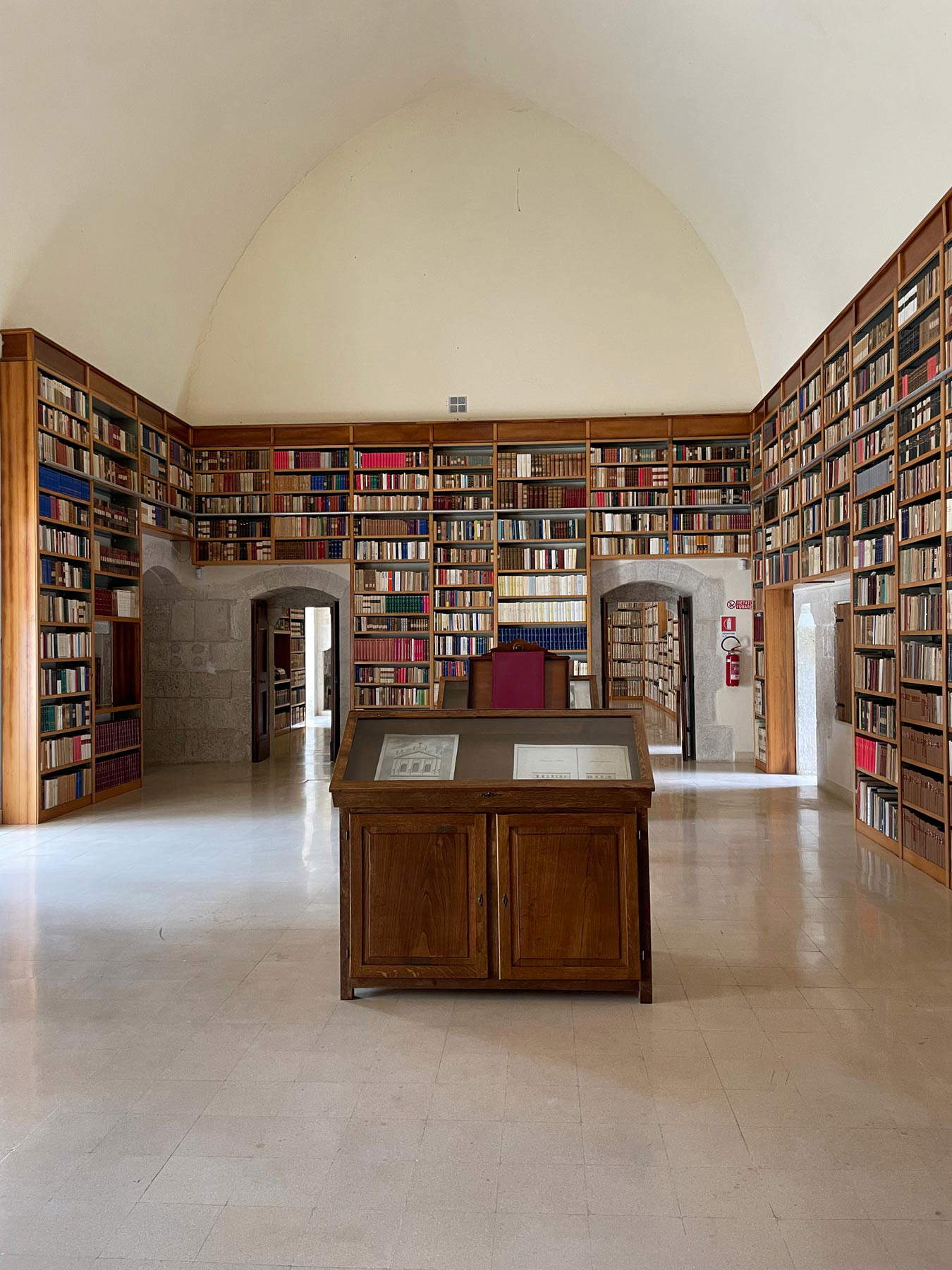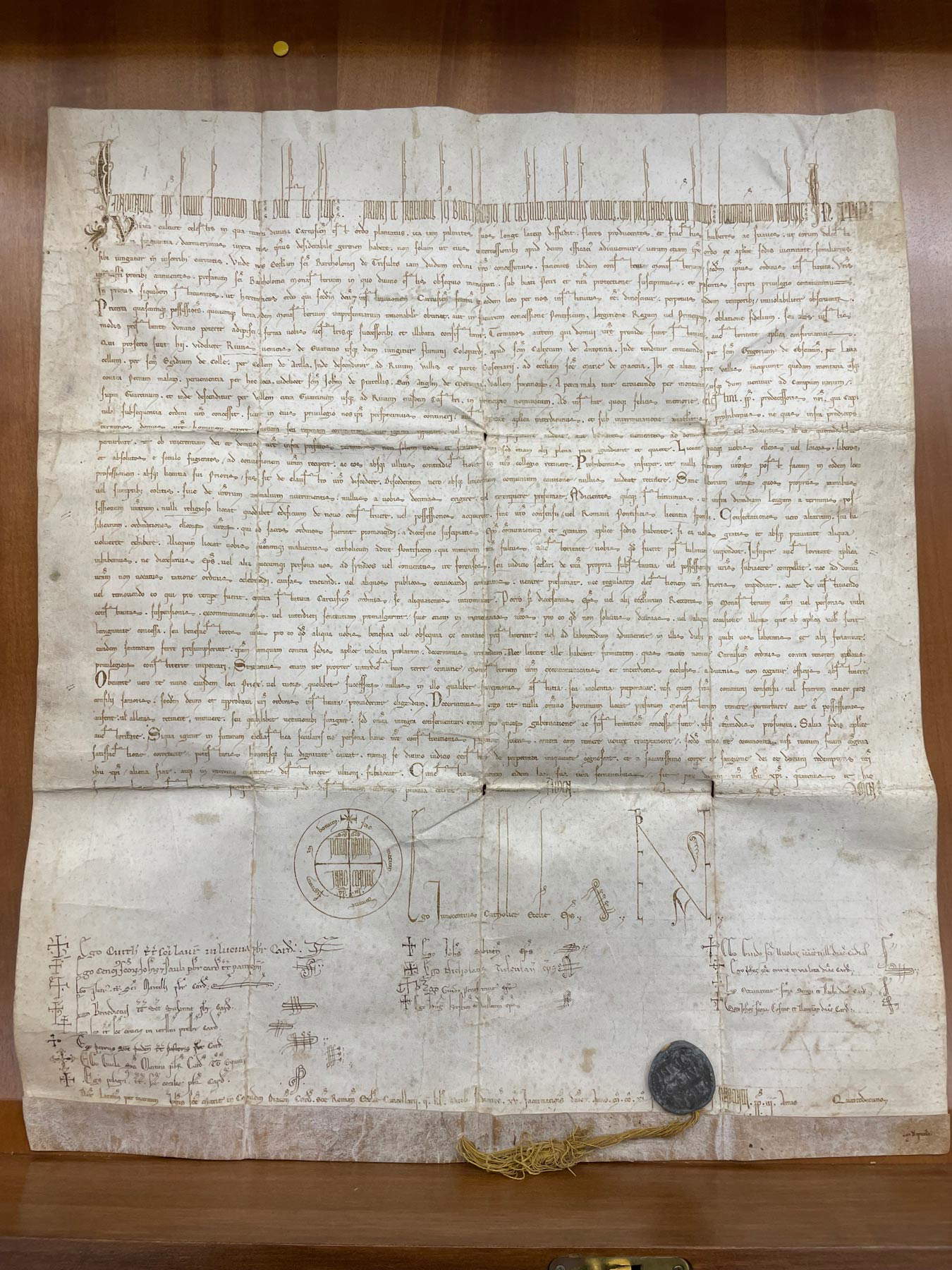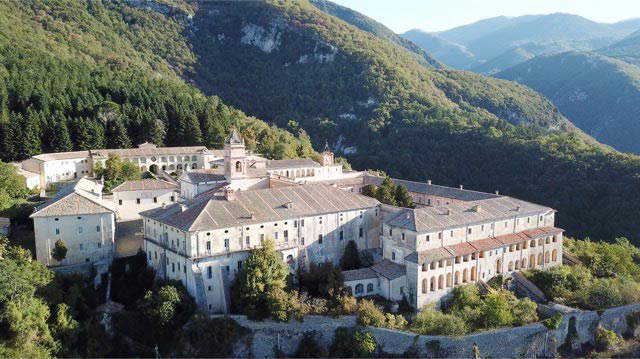The Carthusian Monastery of St. Bartholomew, better known as the Carthusian Monastery of Trisulti, stands on a hill 850 meters above sea level in the town of Collepardo, a village of about 900 inhabitants located at the foot of Mount Rotonaria, of the Ernici mountain range, which divides Lazio from Abruzzo, not far from the provincial capital, Frosinone. The name “Trisulti” derives from that of the castle “Trisalto,” of the Colonna family, which in ancient times stood to the east of the Charterhouse and overlooked the three wooded passes(tres saltibus, “three jumps,” or “three passes,” precisely), which led respectively into the province of Campagna, that is, present-day Ciociaria, Abruzzo and the Kingdom of Naples. Since time immemorial, the Carthusian Monastery of Trisulti has housed the library, now a national monument, housed at the Palace of Innocent III and in the Palazzo della Meridiana, connected by a covered passageway made of carved stone from 1979 to 1983. The palace named after Innocent III, because it was built at his expense, presents itself in its gothic and Romanesque lines, measured and sober, and recalls distant centuries that time does not erase, because it is linked to the very life of the Charterhouse.
The Trisulti Library is known for its ancient collection, a precious container of treasures on paper, many of them still to be studied. The oldest of the books in the library’s holdings is an incunabulum (the term used to indicate the first books in the history of printing, dating back to the 15th century), the Divi Jeronimi Opera of 1468, a book containing the writings of St. Jerome. It is followed, in terms of antiquity, by a 1478 edition of Lucius Anneus Seneca’s Opuscula Philosophica and a 1480 edition of the Summa Theologica by St. Antoninus of Florence, a Dominican theologian and archbishop of Florence who lived in the late 14th and early 15th centuries. The Trisulti Library also keeps in its ancient collection numerous cinquecentine, or books printed in the 16th century. There are 628 in all: some works of St. Augustine stand out in particular.


Among the manuscripts (211 in all), the oldest of which date back to the sixteenth century, a volume with the Canticles of Blessed Jacopone da Todi is well preserved, and among those on parchment a codex of particular splendor is the Gradual Monasticum Cartusianum, from 1563, written in Gothic script (by “gradual” is meant a book that collects the chants for the celebration of the Eucharist). Also from the 16th century is the Corale Monasticum, another beautiful membranous volume with Gregorian musical notation and precious miniatures including that on folio 160 of the Easter liturgy, where in a large R richly decorated with friezes is illuminated a risen Christ against a background depicting a landscape, while at the foot of the same page in a round frame of laurel leaves is an image of Saint Bruno at prayer.
To find older papers, however, it is necessary to search theCarthusian monastery’s archives, which hold thousands of parchments and paper records spanning a chronological span from the beginning of the 13th century, but also including very rare fragments from the 11th and 12th centuries, some of which are copies, and reaching as far back as the early decades of the 20th century. Unfortunately, we have not received any documents relating to the primitive foundation of the Carthusian monastery of Trisulti, desired by the Benedictine Domenico da Sora, which would date back to the 10th century, although in the archives there are records of the hermit’s ancient cell around the cave of “Petra mala.” Instead, acts of donation of land to the hermit in the year 1003 and 1004 by inhabitants of Collepardo and Vico, a privilege of Pope John XVIII in 1005 are preserved in the library: the document on the foundation, on the contrary, has not reached us. Then there are other ancient documents: in particular, two pontifical acts are from the 12th century, by Hadrian IV 1156 and Alexander III in 1170, respectively.

With the construction of the new monastery in 1204, in a location not far from the primitive cell of the monk Dominic, a more accurate preservation of the deeds of possession and privileges bestowed on the new Carthusian community began. The collection of the Trisulti Library in fact preserves a conspicuous number of parchments from the 13th century, which, moreover, entailed the need for some sorting: in fact, we know that in the 14th century papal parchments, deeds and privileges were kept in “sacculi” according to a geographical division. The archives underwent a profound upheaval in the early seventeenth century with the construction of new cabinets to hold the documents.
It was, finally, only the monk Vincenzo Maria Marucci, in 1692, who set out to write an ambitious work, the Annales Trisultani, which is today a valuable source for drawing news and finding scrupulously recorded all the existing documents of the archives at that time. A mass of papers, codices and books that to a large extent turns out still to be studied and could therefore also reveal interesting news in the future.
The State Library of the Trisulti National Monument is the library of the Carthusian Monastery of Trisulti, a monastery whose origins date back to 996, when it was founded by St. Dominic of Sora, not far from where the present abbey stands, built in 1204 in a more accessible location at the behest of Pope Innocent III, and assigned to the Carthusians from 1208. Remodeled and enlarged several times over the centuries, the monastery, since 1947, has been run by the Congregation of Cistercians from the nearby Casamari Abbey. Inside it is possible to visit the Church with valuable works of art and the ancient Pharmacy from the 17th century.
Currently assigned to the Ministry of Culture, which manages it through the Polo Museale del Lazio, the Library of Trisulti Abbey, dating back to the 11th century, specializes in religious sciences and preserves, among other things, ancient manuscripts and incunabula and volumes from the 16th and 17th centuries as well as modern volumes and periodicals. The Library has a holdings of more than 39,000 books and archival items, including more than 15,000 volumes and pamphlets, 211 manuscripts, 628 sixteenth-century editions, and numerous seventeenth-, eighteenth- and nineteenth-century editions. Also present is a catalog of engravings.

Warning: the translation into English of the original Italian article was created using automatic tools. We undertake to review all articles, but we do not guarantee the total absence of inaccuracies in the translation due to the program. You can find the original by clicking on the ITA button. If you find any mistake,please contact us.